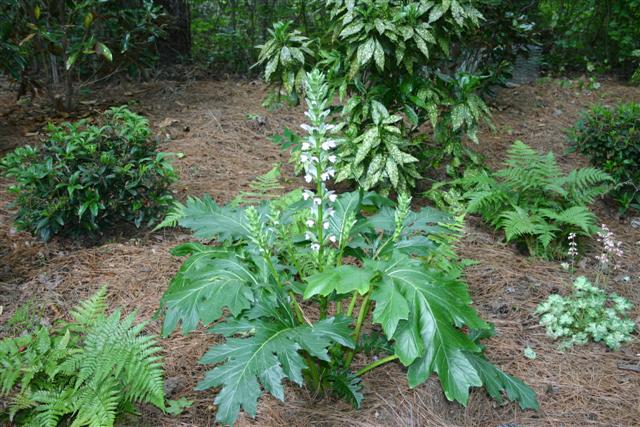Georgia Gardener Newsletter Design Tip: April 17, 2008
Bear's Breech (Acanthus mollis)
Let's face it - gardening in dry shade can be a real pain. And there was never so much dry shade as there was last year. Parts of
my shady landscape that were once considered mesic (average moisture) were bone dry. Those areas that were dry to
begin with were Saharan by the end of the summer. With no supplemental water, this gave me a real chance to watch and
see who performed well and who petered out.
While compiling this list of my dry shade favorites, which is by no means comprehensive, I was surprised to see just how many
evergreen perennials made the list. These plants are marked below their images with an asterisk (*). Having evergreen
perennials in dry shade means that you will have interest year round.
|
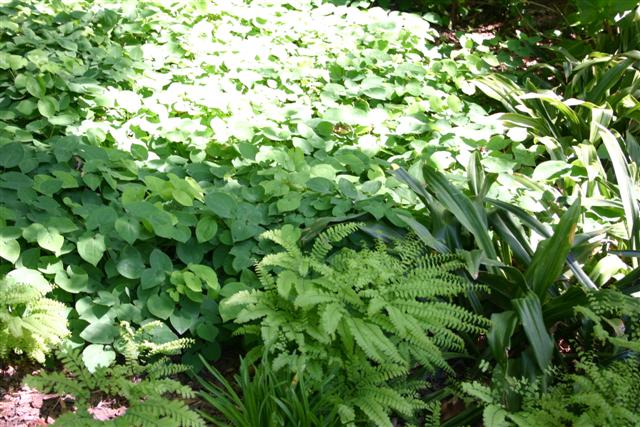
|
| Lungwort* | Barrenwort* |
Lungwort (Pulmonaria spp.) is known for its speckled evergreen leaves and blue flowers in the early spring. On
many of the cultivars, the flower stalks extend well above the leaves and the flower buds emerge pink changing to blue bell-like
flowers that remind me very much of Virginia bluebells. Lungwort derives its name from the old practice of using the plant
to treat lung disorders. Barrenwort, aka bishop's hat, (Epimedium spp) was once used to treat barren women and is also evergreen
with leaves that have a strange resemblance to a bishop's hat. The flowers, which can be yellow, white, pink, etc., appear in
the late winter to early spring. Both of these plants are considered groundcovers. Barrenwort will spread slowly to form
nice clumps. Lungwort does not appear to spread but can be dug and divided every few years.
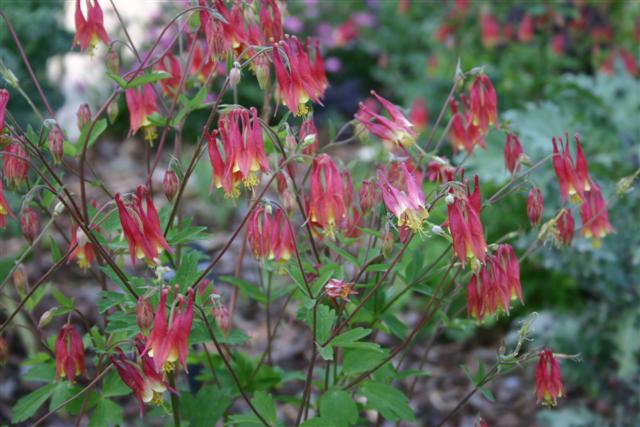
|
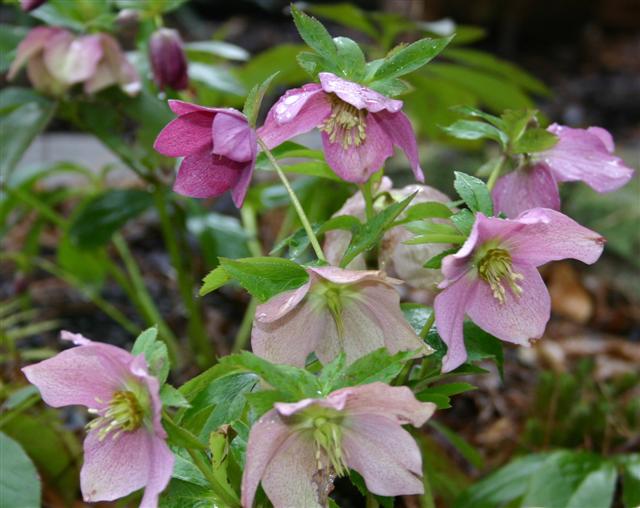
|
| Red Columbine | Lenten Rose* |
Although not listed as a perennial for dry shade, our native red columbine (Aquilegia canadensis) has the amazing capability
of going where it wants and sometimes appears considerable distances from the mother plant. My columbines started out in moist shade only
to seed throughout the garden and into some of the driest areas. Although prolific, I don't find them invasive at all, especially
since they're native. Blooming occurs in the early to mid spring with younger plants blooming in early summer.
Lenten and Christmas rose (Helleborus spp.) with their palmate evergreen leaves are are the backbone of the winter shade
garden. Blooming from winter into spring (depending upon the variety), these plants do not seem troubled by dry conditions.
Flower colors range from white to green to shades of lavender.
Many varieties will produce copious amounts of seedlings around the base of the mother plant.
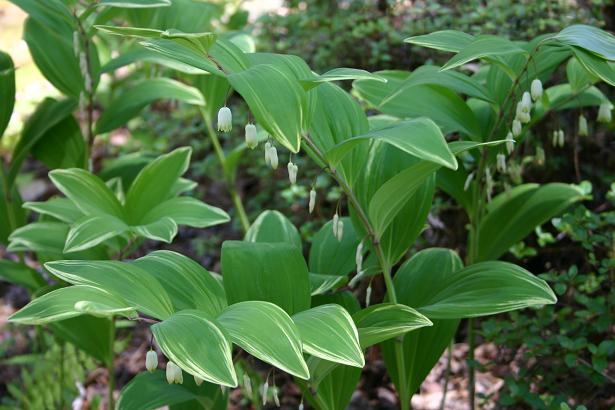
|
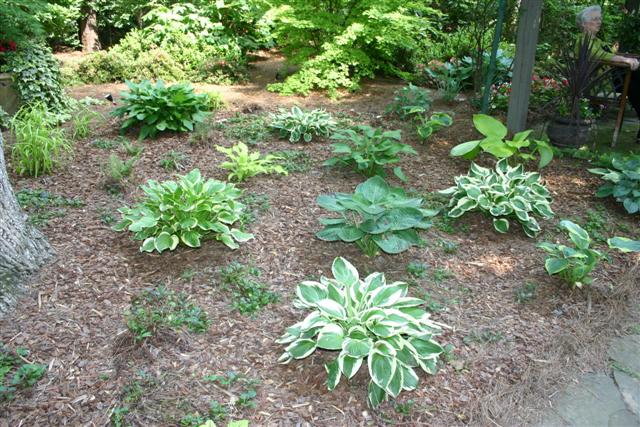
|
| Variegated Solomon's Seal | Hosta Mix |
Another perennial often not seen in lists for dry shade is the variegated solomon's seal (Polygonatum odoratum 'Variegatum').
These plants really brighten a shady garden with their green/white variegated leaves. In spring as the plants emerge, small
white flowers will hang down below the foliage. In fall, they will turn a bright butter yellow before going dormant for
the winter. The clumps will slowly expand and can be divided every few years. Hostas are also not often listed for
dry shade, but I've been impressed with their ability to handle drought. One way to have healthy hostas during drought is to
make sure the soil is high in organic matter (see the notes at the end).
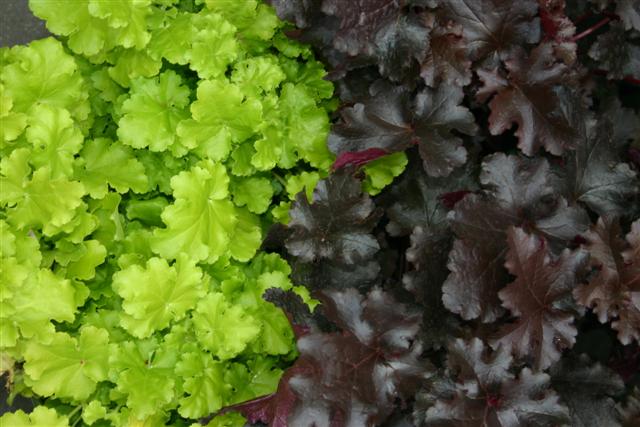
|
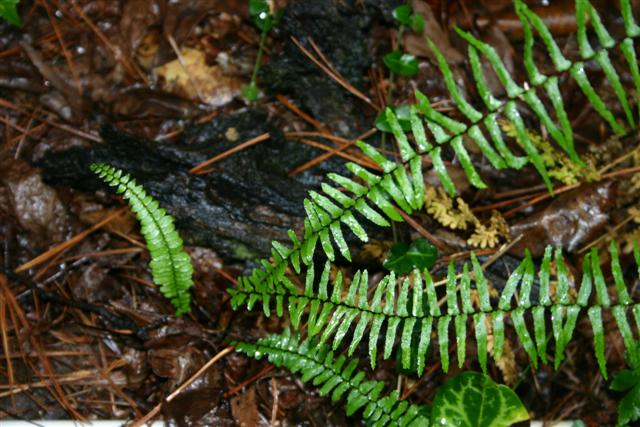
|
| Coral Bell Combination* | Ebony Spleenwort* |
Coral Bells (Heuchera spp. and cultivars) actually demand good drainage. Our native alumroot (Heuchera americana)
grows naturally in rocky soils often on slopes. Therefore if the soil doesn't have good drainage, you may find that the
plants will succumb to root or crown rot diseases. I'm astounded as to how many cultivars there are available with such a wide
range of foliage colors and patterns. This is definitely a foliage plant as the flowers are small and not nearly as eye-catching.
Ebony spleenwort (Asplenium platyneuron) is a small (12 inch) evergreen fern that resembles a dwarf Christmas fern. These
ferns are often found growing in very dry or rocky soil around pines. Easily transplanted and somewhat prolific, I often see
volunteers in shady landscapes along foundations and retaining walls. They also make nice container plants.
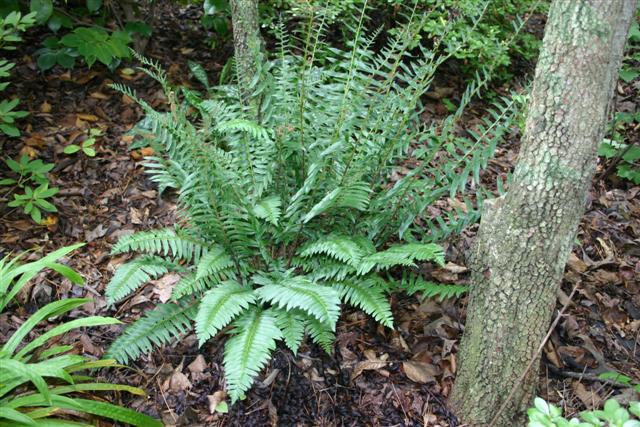
|
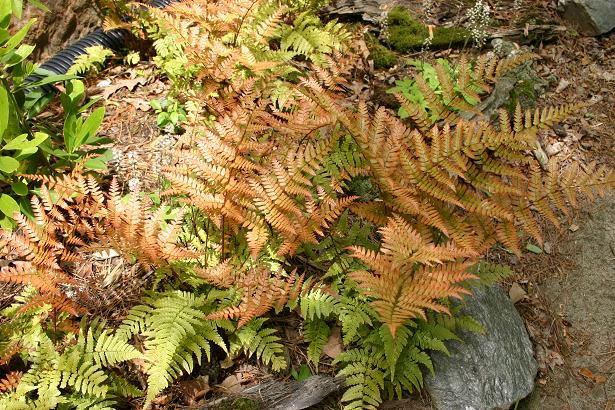
|
| Christmas Fern* | Autumn Fern* |
If you are looking for drought-tolerant evergreen ferns then Christmas fern (Polystichum acrostichoides) and Autumn
fern (Dryopteris erythrosora) are your best bets. Christmas fern is an abundant native fern that can be found growing
wild throughout Georgia in a variety of habitats. It doesn't seem to care as long as it's protected from hot afternoon sun. I
like to use Christmas fern in containers as a replacement for the non-hardy Boston fern as Christmas ferns can be left outside
year round. I also like to use it to line the paths of my woodland garden as I prefer to use it over liriope.
The only problem with Christmas fern is that it tends to lay flat in the winter and looks best if the old fronds
are removed in the spring. Autumn fern, on the other hand, remains beautifully lush throughout the winter. It thrives
in a wide variety of soil conditions as long as it has some shade. It can also be used in containers. The new fronds
emerge in the spring a copper-bronze color giving it an autumn appearance. These fronds quickly green up.
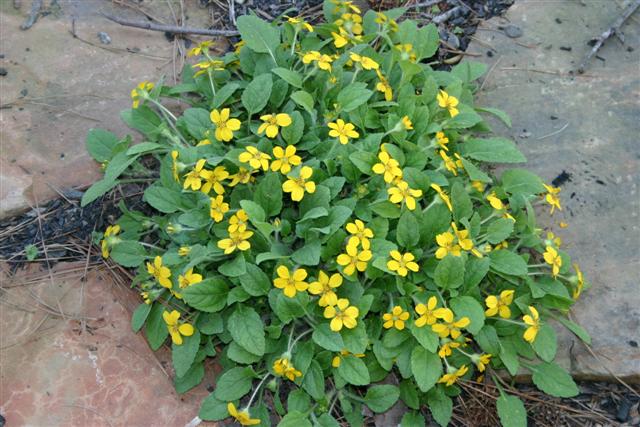
|
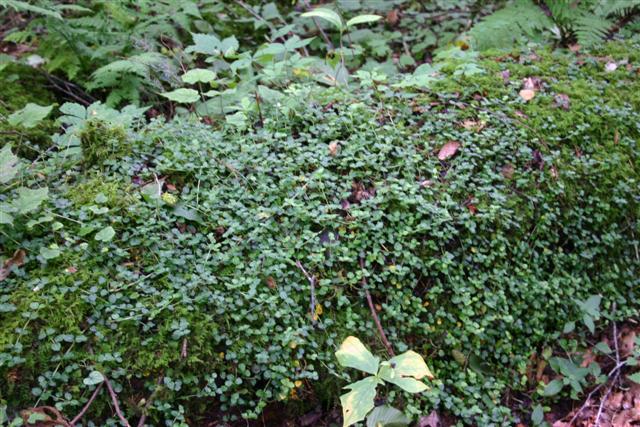
|
| Green and Gold* | Partridgeberry* |
The groundcover green and gold (Chrysogonum virginianum) which also happens to be this issue's "Cool Plant," has thrived
in some pretty tough places in my landscape. It has even done okay (not great) between stepping stones in full sun. It seems
to prefer living on the edge in partial shade. Another native groundcover, partridgeberry (Mitchella repens) has managed
to creep out of a container and is now colonizing the worst compacted clay soil near my walkway. This area is in full shade.
It has done an even better job of creeping up a hill into my neighbor's fescue that gets direct sunlight until 2PM.
It's worth noting that there are also some dry shade-tolerant annuals. These include flowering tobacco (Nicotiana spp.)
and nasturtium (Tropaeolum majus) which can be started easily from seed.
Improve Your Chances
You can get many more plants to tolerate dry shade if you do two simple things: amend your soil so that it's rich in organic matter
(compost, Nature's Helper®, manure, good topsoil) and maintain 2-3 inches of organic mulch (pine straw, shredded bark,
shredded leaves, etc.).
Plant Thugs in Shade
There are several plants, particularly some groundcovers that can be so invasive in shade that they aren't worth the trouble:
English ivy, Vinca major and minor, Liriope spicata (and its cultivars), varieties of Lamium (aka deadnettle) and to a lesser
extent, Japanese pachysandra.
Copyright © 2008 by Theresa Schrum - All rights reserved
No part of this website may be reproduced without the expressed written permission of Theresa Schrum
